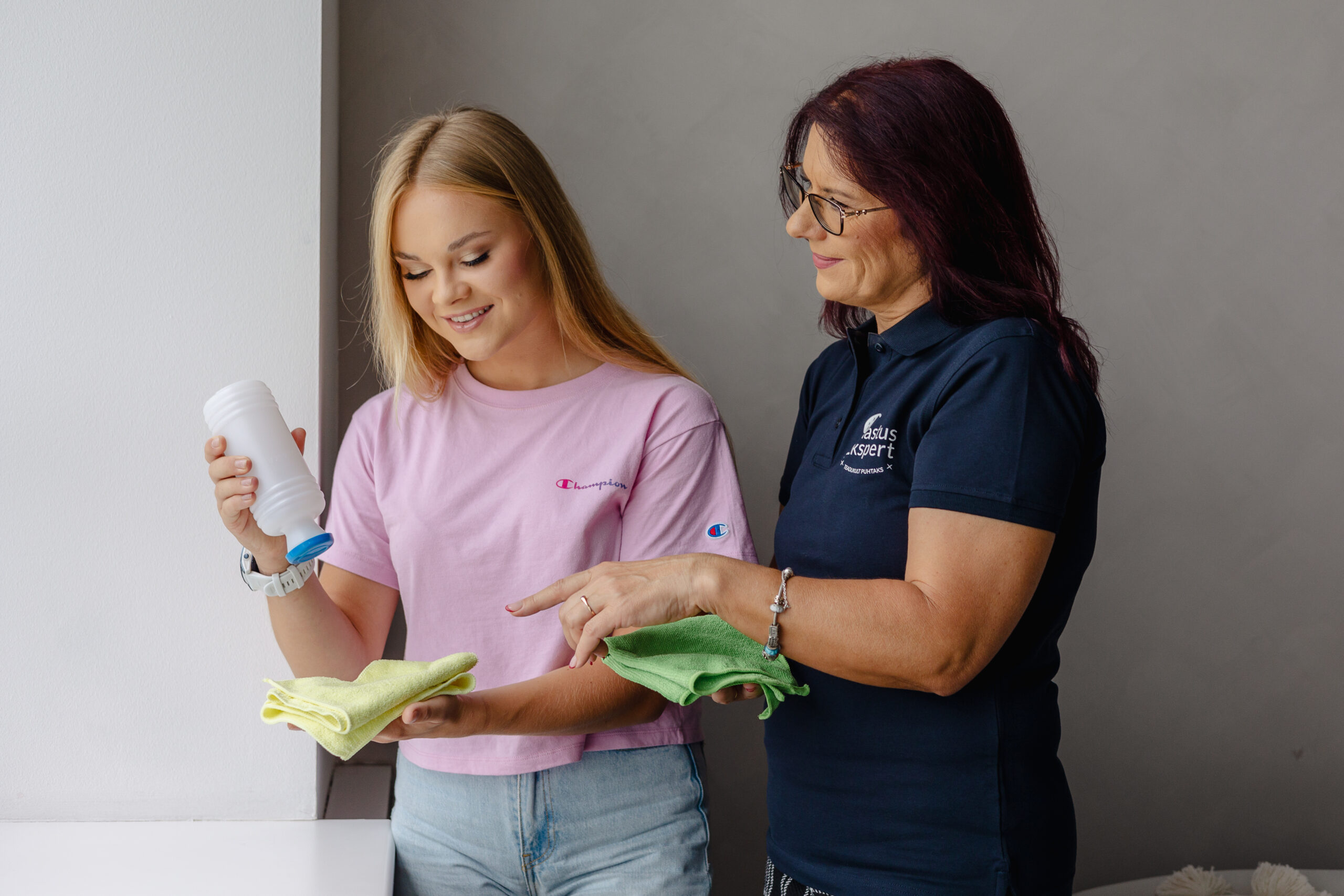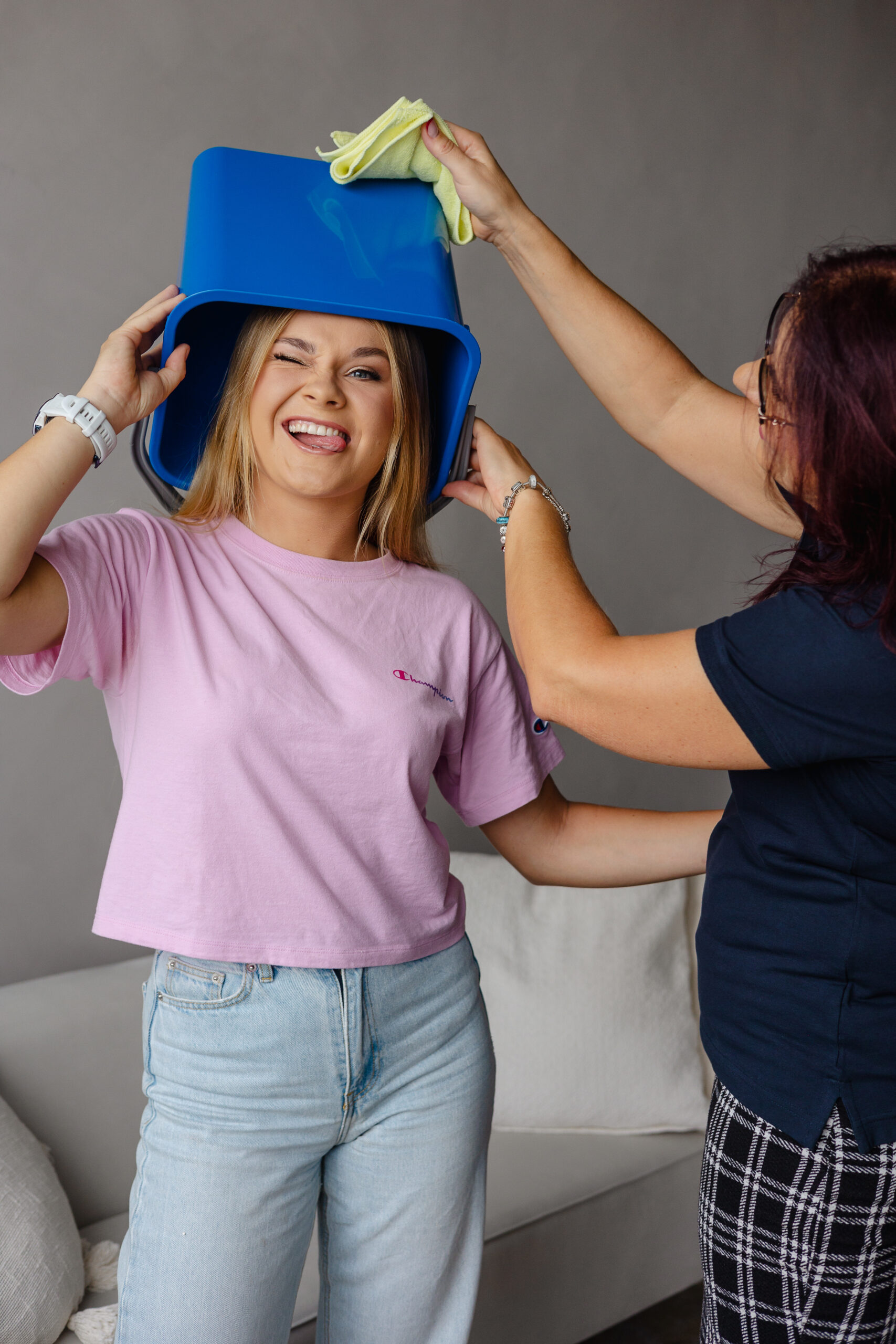info@puhastusekspert.ee +372 5611 1048
Home Cleaning Habits of Young People in Estonia
 Cleaning and the resulting cleanliness have a direct impact on people’s health, affecting both those who clean and those who occupy the premises.
Cleaning and the resulting cleanliness have a direct impact on people’s health, affecting both those who clean and those who occupy the premises.
Cleaning is a field that everyone encounters. Someone cleans all premises – at home, at work, at school, and in public places. This requires time, cleaning agents, and machines. Cleaning can promote health and well-being, but it can also be detrimental to health. The impact depends on how cleaning is performed, or rather, on awareness.
As a high school research project in 2023/2024, Maria Liis Alt conducted a study on the home cleaning habits of 14-19-year-old Estonian youth. The aim was to determine how cleaning could be made easier and more health-promoting. 476 young people responded to the survey, and research on home cleaning from various countries was analyzed. A practical experiment was also carried out, where three families cleaned their homes for one month according to the recommendations provided.
Several authors (Gordon, Sherry; psychologist Dr. Bösenkopf’s comment in the Kärcher study) have highlighted the impact of cleaning on health, which can be summarized as follows:
- Cleaning has a relaxing effect, reduces stress, and people have better concentration in a clean environment.
- People get sick less often in a clean environment.
- Cleaning as a physical activity positively affects physical health.
A study conducted in Germany in 2022 showed that 78% of people felt relaxed after cleaning. Furthermore, several sources indicate that clutter increases stress, slows people down, and causes both mental and physical exhaustion.
Summary of the Study Conducted in Estonia
Based on the responses of 476 young people, the following can be highlighted:
- There is no specific cleaning day for home cleaning; instead, cleaning is done continuously, usually a little bit each day.
- Almost all young people are involved in home cleaning (98%), with no significant differences observed between genders.
- Contact surfaces that do not appear dirty are often not perceived as soiled and are therefore not cleaned.
- 79% of homes have an excessive number of cleaning agents.
- Over 70% use a microfiber cloth for cleaning.
- 79% of homes use a brush or vacuum cleaner to remove dry, loose dirt. This method of cleaning hard floors releases a considerable amount of dust into the air and is a time-consuming process.
- 57% of homes have a floor washing bucket and wash floors. This suggests the use of overly wet methods, which can create a layer of dirt on surfaces.
- 96% of respondents have dishwashing sponges at home, while few wash dishes with a brush. This is an unhygienic and environmentally impactful method of washing dishes.
- 80% receive cleaning knowledge from their parents. Families have the opportunity to learn together.
The results of the study conducted in Estonia were similar in several aspects to, for example, the international study conducted by Kärcher in 2019, which involved 11,000 participants.
Conclusions and Recommendations
 The primary objective of this research was to provide simple recommendations to make home cleaning easy, quick, and health-promoting. Based on the analysis of the study results, a review of various research, and Puhastusekspert’s experience, it is advisable to implement changes in the following areas:
The primary objective of this research was to provide simple recommendations to make home cleaning easy, quick, and health-promoting. Based on the analysis of the study results, a review of various research, and Puhastusekspert’s experience, it is advisable to implement changes in the following areas:
- Cleaning could be better planned and more clearly distributed among different individuals. For instance, small tasks could be assigned daily: cleaning contact surfaces on Monday, dusting on Tuesday, and so forth.
- Homes use an excessive number of cleaning agents. Agents are primarily needed for dishwashing, cleaning toilet bowls, and removing sediment (if it occurs). Most dirt can be removed with a water-dampened microfiber cloth.
- Spray bottles are widely used, and their application in cleaning is harmful to health in several ways. Instead of spray bottles, a wetting bottle should be used when applying cleaning agents, for example, to the toilet bowl.
- Conscious use of a microfiber cloth is crucial, involving proper folding and wetting. This method allows for the removal of most dirt. Correct wetting is key; if cloths are too wet, they will spread dirt. It is advisable to moisten cloths before commencing cleaning.
- Identifying and cleaning contact surfaces creates a healthier environment, using a water-dampened microfiber cloth for this purpose.
- When removing dust and dry, loose dirt from floors, vacuum cleaners and brushes are often used, but these methods disperse dust into the air. It is more effective to use a floor squeegee-sweeper, and the use of disposable cloths is also more appropriate.
- Floors are washed excessively; instead, they could be cleaned with a microfiber cloth that is damp or slightly damp, depending on the dirt to be removed.
- The use of dishwashing sponges is unhygienic; they should be replaced with a dishwashing brush, preferably one designed for the food industry. Dishwashing brushes can also be used effectively for cleaning other surfaces, such as sinks, drains, or washing sneakers. It is important to use different brushes for different tasks.
The aforementioned recommendations were also provided to young people to clean their homes in a new way for one month. The results of the experiment can be summarized as follows:
- Cleaning time decreased significantly. Before the experiment, home cleaning took 5–8 hours per week; after the experiment, it was approximately 1 hour per week. It should be noted that only 3 families participated in the experiment, and generalizations cannot be made based on their experience. Based on Puhastusekspert’s experience, the average family spends 4 hours per week on cleaning. If cleaning is performed consciously, the average cleaning time decreases to 2.5 hours per week, and the results are improved.
- Before the experiment, homes had 6 or more cleaning agents in spray bottles. After the experiment, the number of agents was reduced to 1-3, and spray bottles were abandoned, with the benefits of this change highlighted.
- Before the experiment, a vacuum cleaner was used 1-3 times a week. As a result of the experiment, vacuum cleaner usage decreased significantly, and cleaning hard floors with a floor squeegee-sweeper yielded better results while requiring less time.
- The most significant change was observed in the method of using microfiber cloths – the cloth was moistened according to the provided wetting instructions before cleaning and then folded.
- It was acknowledged that changing cleaning habits is actually simple and has a significant impact.
Summarizing the study and the reviewed materials, it can be concluded that conscious cleaning from a young age is crucial. What is often depicted in advertisements can mislead people. If a young person changes their home cleaning habits, it is possible to reduce the time spent on cleaning by 5,000 hours over a lifetime, assuming an average lifespan of at least 80 years. Simultaneously, conscious cleaning promotes health. Habitual cleaning is highly likely to be time-consuming, inefficient, and detrimental to health. Conscious cleaning achieves cleanliness quickly and easily, is beneficial to health, and has a therapeutic effect.
Additional Materials:
- Cleaning Handbook, e-book: https://puhastusekspert.ee/toode/e-raamat-koristamise-kasiraamat-eesti-keeles/
- Cleaning Ergonomics Training Films: https://ergoclean.eu/
- Cleaning Recommendations: https://pandemicclean.eu/